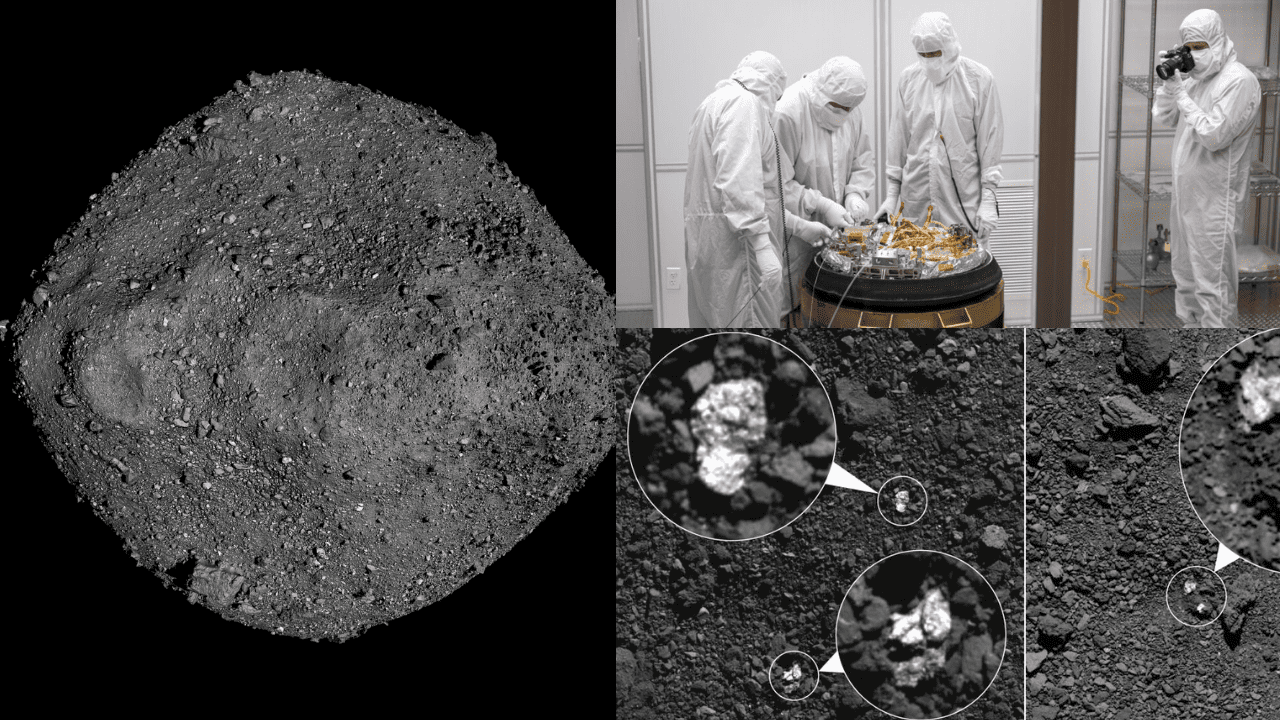Nasa Finds Basic Matter For Life In An Asteroid Sample | Might Explain How Life Began On Earth!
For centuries, we’ve gazed up at the stars and wondered about our place in the universe. Could life as we know it have originated beyond the Earth? It’s a tantalizing question. The recent return of a NASA mission might hold some pivotal clues. NASA’s OSIRIS-REx mission made headlines recently when it brought back a piece of the universe to Earth. This was a sample from Bennu, a 4.5-billion-year-old asteroid. And guess what? This asteroid sample isn’t just ancient cosmic history; it’s brimming with the building blocks of life! “That is how we think water got to Earth. The reason that Earth is a habitable world, that we have oceans and lakes and rivers and rain, is because these clay minerals landed on Earth 4 billion…
For centuries, we’ve gazed up at the stars and wondered about our place in the universe. Could life as we know it have originated beyond the Earth? It’s a tantalizing question. The recent return of a NASA mission might hold some pivotal clues.
NASA’s OSIRIS-REx mission made headlines recently when it brought back a piece of the universe to Earth. This was a sample from Bennu, a 4.5-billion-year-old asteroid. And guess what? This asteroid sample isn’t just ancient cosmic history; it’s brimming with the building blocks of life!
“That is how we think water got to Earth. The reason that Earth is a habitable world, that we have oceans and lakes and rivers and rain, is because these clay minerals landed on Earth 4 billion years ago to 4 and a half billion years ago, making our world habitable. So we’re seeing the way that water got incorporated into the solid material.”
Lauretta, who is also a University of Arizona Regents Professor of Planetary Sciences.
Asteroid Rich In Water and Carbon: Key matter for Life
The primary analysis of the samples brought back from Bennu has left scientists in awe. They found that Bennu is not only rich in water but also contains a surprising amount of carbon. To put it in perspective, the sample has nearly 5% carbon by weight.
According to Dr. Jason Dworkin, an OSIRIS-REx project scientist, this is one of the highest carbon concentrations ever studied in an asteroid.
But why is this significant? Water and carbon are foundational to life as we understand it. These findings further support a popular scientific theory. Asteroids like Bennu could have seeded Earth with the necessary ingredients for life!
Bennu: A Time Capsule from the Cosmos
Just imagine: billions of years ago, a storm of asteroids might have rained down on Earth. It could have brought with them the water that now fills our oceans, lakes, and rivers.
Dante Lauretta, OSIRIS-REx’s principal investigator, shared that these clay minerals, which carry water, might have made our world habitable. In his words, “We’re seeing the way that water got incorporated into the solid material.”
But the analysis didn’t stop at just water and carbon. The samples also unveiled sulfide minerals, essential for planetary evolution and biology, and magnetite, which reacts to magnetic fields. These compounds could be pivotal for organic evolution.
An Astrobiologist’s Dream
What makes these discoveries even more exciting is that they surpass expectations. Dr. Daniel Glavin, an OSIRIS-REx sample analyst, remarked, “This stuff is an astrobiologist’s dream.” With such a rich bounty from Bennu, scientists are now eager to dig deeper. They are hoping to determine whether these building blocks of life evolved into peptides, which are chains of amino acids forming proteins.
A Seven-Year Journey Bearing Fruits
Initiated in 2016, the OSIRIS-REx mission’s journey from launch to sample return took seven years. The moment was especially poignant for individuals like Dante Lauretta, who had been involved from the mission’s earliest stages.
And the careful care taken with the samples is commendable. Vanessa Wyche, director of NASA’s Johnson Space Center, mentioned how scientists and engineers had worked collaboratively for years to ensure the pristine condition of the asteroid material. The samples are now set to undergo strict analysis over the next two years. Its portions are shared globally, ensuring a broad spectrum of scientific minds engage with this cosmic treasure.
More carbon than expected and an abundance of water were found in the 4.5-billion-year-old asteroid sample returned to Earth by #OSIRISREx. The two combined could mean that the building blocks for life on Earth might be locked in these rocks: https://t.co/IY6QfXXqeT pic.twitter.com/olxjDQG6bm
— NASA (@NASA) October 11, 2023
The Promise of Tomorrow
While we’re still at the beginning of understanding the full scope of what the Bennu samples offer, the initial findings already hold profound implications. As Dante Lauretta aptly said, “Rocks tell you a story.” This story could be the most fascinating one yet, potentially unraveling the mystery of how life transitioned from a mere “ball of mud” to the vibrant, living world we know today.
Conclusion
So, the next time you sip on a glass of water or marvel at the intricacies of life, remember: the answers to our most profound questions might just lie in the stars—or, more specifically, in ancient asteroids like Bennu.
Also read,






